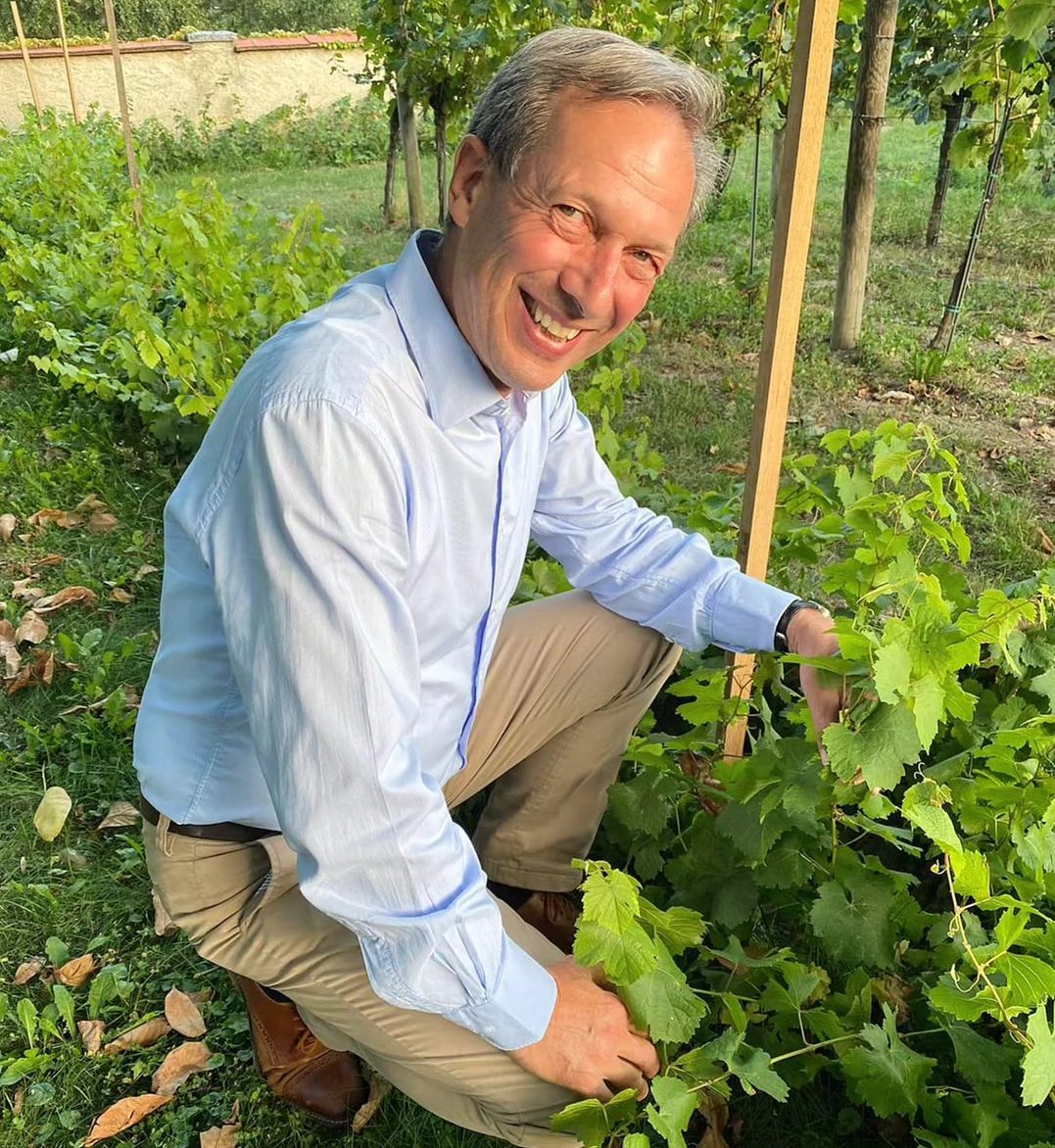
The position of Austrian wines right now is somewhat two-sided. On the one hand, the Alpine republic has never been more successful in exporting its wines around the globe, but on the other hand 2022 was quite a challenging vintage for the dry white wines for which it is best known. This was the result of the unusual weather pattern during the growing season, particularly the heavy rain in August.
Once again, gruner veltliner, the nation’s signature grape, took the biggest hit from this unhelpful situation, just as it did for the opposite reason (drought) in 2017 and 2018. That’s why there are fewer gruners on this year’s list than there were last year. There’s another more general reason for the relatively small number of 2022 dry whites on this list, and that’s the number of late-released 2021s we were wowed by.
Our Austrian Wine of the Year, the F.X. Pichler Riesling Wachau Unendlich 2021, is a perfect example of this. Yes, we loved Lucas Pichler’s 2022 single-vineyard rieslings and gruner veltliners, and they are among the stars of the vintage. However, this wine and his F.X. Pichler Grüner Veltliner Wachau Unendlich 2021, in 21st place, are just more expressive and more exciting. Both these wines are only produced when super-ripe and clean grapes can be gathered in a decent quantity, and of these two the riesling has the most charisma.
This is not the first time the Riesling Unendlich has been named Austrian Wine of the Year, The 2017 vintage also had the honor in 2018. And the F.X. Pichler Riesling Wachau Ried Kellerberg 2020 was our Austrian Wine of the Year in 2021. These are all powerful wines, however, the alcohol levels in most of this producer’s wines have come down a long way compared with five and more years ago. The idea that we always favor big wines is nonsense, as last year’s Austrian Wine of the Year, the Nigl Riesling Kremstal Ried Hochäcker EL Privat 2021, proves. It is a masterpiece of filigree and delicacy!
Some print and online publications have recently made a big noise about Austrian reds, as if they were something startlingly new. We’ve been very excited about them for quite a few years. Two reds in our Top 10 should be no surprise if you read this list last year and the year before. Nor should the Moric Blaufränkisch Burgenland Lutzmannsburg Alte Reben 2021 grabbing second place (it was also No. 9 on our Top 100 World Wines 2023 list) thanks to its combination of aromatic complexity and great finesse on the highly structured palate. The wines Roland Velich makes at Moric has been impressing us since we first tasted the 2002 vintage exactly 20 years ago.

Coming in at No. 3 is the highest-placed dry white of the 2022 vintage, the Rudi Pichler Riesling Wachau Ried Achleithen Smaragd 2022. This is an unbelievably mineral and racy wine with gigantic depth. It comes from a southwest-facing parcel in this famous Ried Achleithen site that would have been considered second-rate a generation ago compared with the main part of the site, which faces south-southeast over the Danube River. A combination of climate change and precise viticulture by Rudi Pichler and his family, with lots of fine-tuning by hand, made this masterpiece.
By the way, the Prager Riesling Wachau Ried Klaus Smaragd 2022, our No. 9 Austrian wine, comes from the next-door vineyard site, the likewise steep and terraced Ried Klaus. This is another mightily mineral dry white with tremendous drive and precision. Winemaker Toni Bodenstein’s first amazing vintage of riesling from the Ried Klaus was the 1990, so this is a wine with a very long track record. It is also the star of stunning range.



Few of the world’s millions of chardonnay fans think of Austria, which is a shame, because there are some amazing wines. None more so than our No. 4 wine, the Velich Chardonnay Austria Tiglat 2021. This is the best vintage to date of this deep and highly structured wine made by Heinz Velich, the bother of Roland Velich at Moric.
At No. 6, the Kollwentz Chardonnay Burgenland Gloria 2021 is another amazing wine with a breathtaking textural complexity. It is just one of a trio of single-vineyard chardonnays Andi Kollwentz produces each year, and in 2021 all of them were stunners. By the way, this is a single-vineyard wine, but unusually doesn’t carry the word “Ried” – the legal designation for single-vineyard wines. It comes from a high-altitude site with limestone soil similar to that in Burgundy.
The leading producers of the Steiermark, also known in the English-speaking world as Styria, have made great strides forward with the sauvignon blanc grape during the last decade. At No. 5, the Wohlmuth Sauvignon Blanc Südsteiermark Ried Edelschuh GSTK 2021 shows that this wines can combine power with brilliance and mineral freshness. This comes from one of the steepest vineyards in the entire country and you really taste the drama of that landscape!


The No. 8 and No. 9 spots are taken by two more exciting dry rieslings. You may wonder why the Hirsch Riesling Kamptal Ried Heiligenstein EL 2022 sits one step above the Franz Hirtzberger Riesling Wachau Ried Singerriedel Smaragd 2022, even though the latter was rated one point higher. It’s because Wine Searcher gives the global average price of the Hirsch wine as $65 and that of the Hirtzberger wine as exactly double that, $130. All our Top 100 lists favor wines that are moderate in price. However, either wine should be pretty mind-blowing.
At No. 10 is the Dorli Muhr Blaufränkisch Carnuntum Ried Spitzerberg Obere-Spitzer EL 2020 – the most exciting expression of the blaufrankisch grape from outside of Burgenland, where most of the vineyards planted with this grape in Austria are concentrated. In spite of its excellent concentration, this is an extremely filigree and subtle wine that’s just beginning to show what it’s made of. It’s an amazing showing from a winemaker, Dorli Muhr, whose day job is running the Wine + Partners PR company!
Read the whole list to discover more of the diversity of regions, grape varieties and wine styles that make Austria so fascinating. However, if you are after one of the wines at the top of this, then don’t hesitate, hurry to grab what bottles you can!
– Stuart Pigott, Senior Editor



